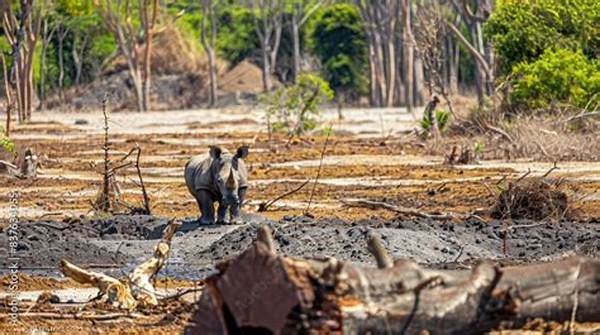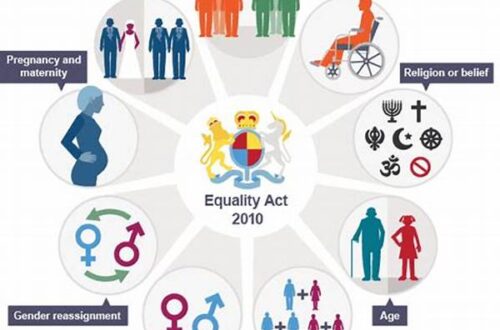The phenomenon of habitat destruction from conflicts poses a critical threat to biodiversity and ecosystems worldwide. Conflicts, particularly in regions rich in natural resources, lead to extensive environmental degradation. The dual impact of human displacement and uncontrolled exploitation during conflicts exacerbates the destruction of habitats, placing numerous species at risk.
Impact on Biodiversity
Habitat destruction from conflicts results in significant biodiversity loss, which is a pressing global concern. During conflicts, local governance structures often weaken, resulting in reduced environmental regulations and oversight. Military activities, illegal logging, and mining intensify, leading to habitat degradation. Such disruptions not only affect the flora and fauna but also the livelihoods of communities dependent on these ecosystems.
Conflicts often force communities to exploit natural resources unsustainably to survive, contributing to habitat destruction. In war-torn regions, forests, wetlands, and other critical ecosystems suffer from land clearance for agriculture, charcoal production, and settlement expansions. This unsustainable exploitation of land resources causes fragmentation of habitats, pushing many species towards extinction.
Moreover, habitat destruction from conflicts can lead to secondary environmental issues such as soil erosion, water contamination, and desertification. The remnants of warfare, including unexploded ordnance and landmines, further complicate post-conflict recovery efforts, leaving a long-lasting impact on the environment and biodiversity. Hence, addressing the environmental consequences of conflicts is crucial for ensuring the sustainable recovery of affected regions.
Ecological Consequences
Habitat destruction from conflicts disrupts food chains and ecosystem services. Various species lose their habitats, leading to population declines. Predators and prey alike are affected, destabilizing ecological balance. Furthermore, the loss of vegetation can alter climate patterns, exacerbate climate change impacts, and reduce the resilience of ecosystems to recover post-conflict.
Infrastructure damage during conflicts leads to environmental degradation. Roads, bridges, and buildings destruction can disrupt natural landscapes, leading to habitat destruction from conflicts. The reconstruction phase often disregards environmental considerations, resulting in further degradation. Efficient planning and implementation of sustainable practices are essential to mitigate such impacts.
Resource extraction accelerates during conflicts, posing significant risks of habitat destruction. Unregulated mining, fishing, and logging increase, depleting natural habitats. These activities not only cause physical alterations in landscapes but also result in pollution and waste, further harming the ecosystems. Collaborative international efforts are needed to regulate resource extraction and protect ecosystems.
Military operations contribute significantly to habitat destruction from conflicts. Areas of strategic significance often suffer from bombings, artillery fire, and other destructive activities. This military-induced devastation can have long-lasting impacts on flora and fauna. Incorporating environmental protection measures in military strategies is vital.
Governance breakdown in conflict zones compromises conservation efforts. The absence of law enforcement allows illegal activities to thrive, amplifying habitat destruction from conflicts. Effectively restoring governance and implementing strict environmental laws post-conflict are critical steps in rehabilitating ecosystems and protecting biodiversity.
Sociopolitical Dimensions
Habitat destruction from conflicts often interlinks with socio-economic inequities. Conflict zones typically exhibit strained political relations, leading to unequal distribution of natural resources. The marginalized communities bear the brunt of habitat loss, losing traditional livelihoods, and exacerbating social inequalities. Addressing these socio-economic dimensions is imperative for sustainable development.
Economic incentives sometimes drive habitat destruction during conflicts. Exploiting resources for immediate financial gain often overlooks long-term ecological impacts. Establishing frameworks to balance economic needs and environmental preservation during conflict resolution processes can mitigate these effects, ensuring both human and ecological well-being.
International diplomatic efforts are essential in addressing habitat destruction from conflicts. Global cooperation is required to create frameworks that prioritize environmental protection amidst conflict. These diplomatic initiatives should emphasize the integration of environmental considerations in peacekeeping and conflict resolution processes, promoting sustainable recovery and conservation.
Rehabilitation Strategies
Post-conflict rehabilitation focuses on restoring ecosystems affected by habitat destruction. Reforestation and ecosystem restoration projects have been pivotal in reviving damaged ecosystems. Implementing community-based conservation strategies encourages local participation, ensuring sustainable management of natural resources. Awareness and education about environmental conservation are crucial.
Funding for environmental recovery is often limited in conflict zones. International support and investment in sustainable development projects can facilitate rehabilitation efforts. These initiatives must prioritize habitat restoration and biodiversity conservation, aligning with the broader goals of peacebuilding and regional stability.
Technological innovation offers potential solutions for mitigating habitat destruction from conflicts. Remote sensing and GIS technologies can monitor environmental changes and guide conservation efforts. Advancements in sustainable resource management practices can also help communities rebuild livelihoods while preserving ecosystems.
Policies promoting sustainable land use are critical in post-conflict recovery. Zoning regulations, community-based management, and incentivizing low-impact agricultural practices can reduce further habitat destruction from conflicts. By addressing land use comprehensively, governments can support both ecological restoration and community development.
Environmental Peacebuilding
Environmental peacebuilding plays a crucial role in addressing habitat destruction from conflicts. By integrating environmental dimensions into peace processes, stakeholders can foster cooperation and dialogue around shared resources. Collaborative conservation initiatives can build trust and facilitate conflict resolution, breaking cycles of violence and promoting sustainable peace.
Aligning environmental and peacebuilding efforts requires cross-sectoral collaboration. Governments, NGOs, and local communities must work together to develop strategies that address both conservation and development needs. Habitat destruction from conflicts should be a central consideration in policy-making, ensuring resilient ecosystems and stable societies.
Conclusion
In summary, habitat destruction from conflicts presents multifaceted challenges that require immediate attention. The long-standing impacts on biodiversity, ecosystem services, and socio-political structures necessitate a comprehensive, integrated approach to conflict resolution and environmental conservation. By prioritizing sustainable development and environmental peacebuilding, the international community can contribute towards mitigating these devastating impacts.
Efforts to combat habitat destruction from conflicts must encompass environmental restoration, community engagement, and international cooperation. Collective actions must focus not only on environmental recovery but also on improving livelihoods and governance structures in post-conflict societies. Through collaborative, dedicated approaches, it is possible to achieve lasting peace and environmental sustainability.





